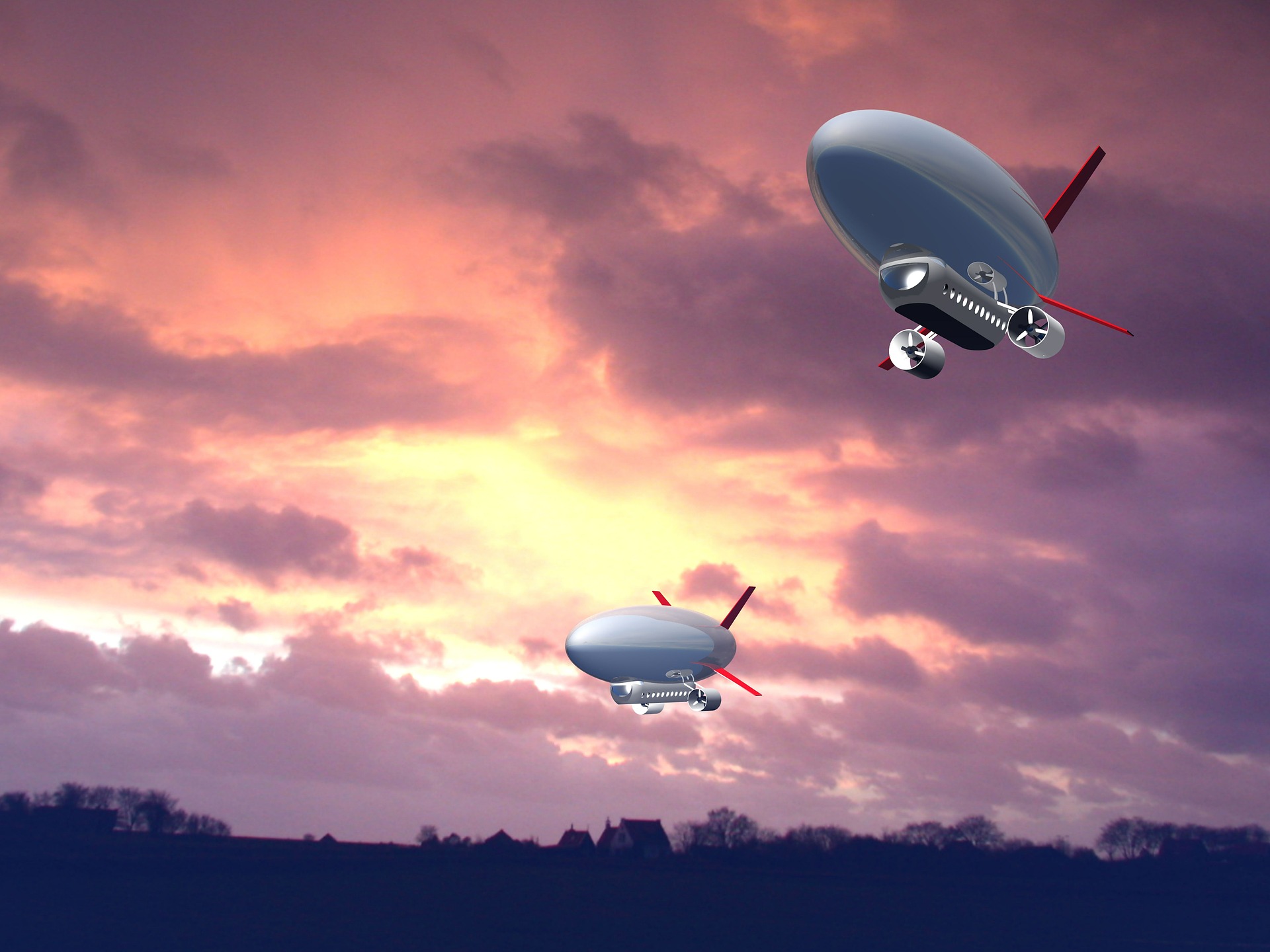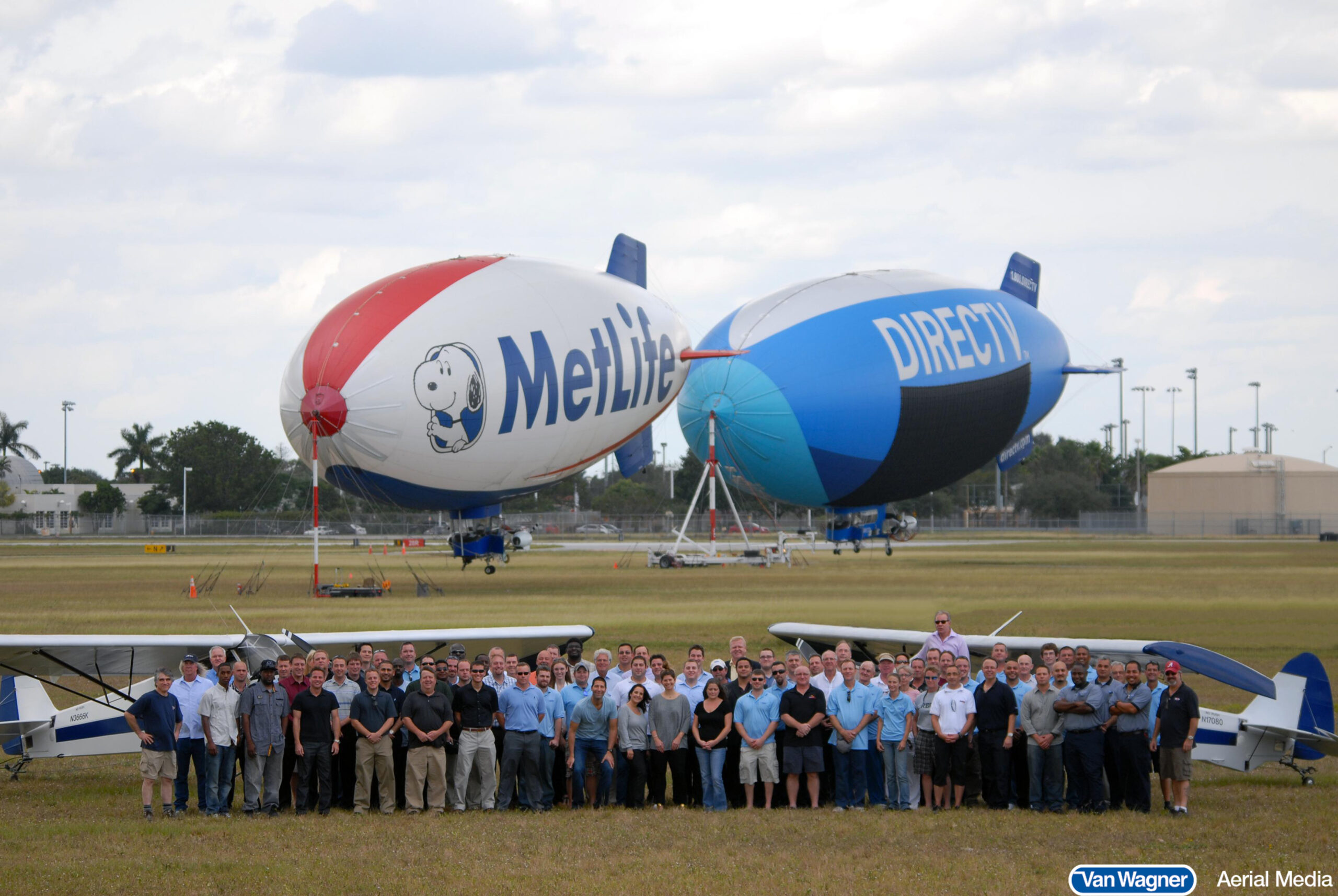Have you ever gazed up at the sky and spotted a majestic, silent airship gracefully gliding across the horizon? These fascinating airborne vehicles, often referred to as blimps, have captivated human imagination for over a century. From their early days as symbols of luxury travel and military might to their modern-day roles in advertising and surveillance, blimps hold a unique place in aviation history. But in an age dominated by jet aircraft and drones, a curious question arises: just how many blimps are there in the world today?
The answer, surprisingly, isn't as straightforward as one might expect. While once a common sight, the numbers have dwindled significantly, making each sighting a truly rare and special event. This article delves deep into the realm of blimp statistics, exploring their past, present, and the challenges they face, to provide a comprehensive answer to this intriguing query.
A Glimpse into the Past: The Enduring Legacy of Airships
The story of airships, including blimps, is one of innovation, ambition, and ultimately, a dramatic shift in perception. Born in the late 19th century, these lighter-than-air craft quickly captured the world's attention. Early airships, particularly the rigid zeppelins, promised a new era of transatlantic travel, offering unparalleled comfort and a unique vantage point from the skies. They served vital roles in military operations during World War I, providing reconnaissance and bombing capabilities, and later became symbols of luxury and technological prowess.
However, the golden age of airships was tragically cut short. The world witnessed a devastating turning point when the Hindenburg crashed and exploded in New Jersey on May 6, 1937. This catastrophic event, widely publicized and deeply etched into public memory, irrevocably damaged the public's trust in hydrogen-filled airships and cast a long shadow over the entire airship industry. While blimps, which are non-rigid and typically filled with non-flammable helium, were technically safer, the Hindenburg disaster led to a widespread decline in airship development and commercial use.
Blimps vs. Zeppelins: Understanding the Distinction
Before we delve into the exact numbers, it's crucial to understand the fundamental difference between blimps and other types of airships, particularly zeppelins. While often used interchangeably by the general public, these terms refer to distinct categories of lighter-than-air craft:
- Blimps (Non-Rigid Airships): A blimp is a type of airship which relies on the pressure of lifting gas, like helium or hydrogen, to keep its shape. It does not have an internal rigid framework. The envelope itself maintains its aerodynamic form due to the internal pressure of the lifting gas. The gondola, where the crew and passengers sit, is directly attached to the underside of the envelope. Blimps are generally smaller, more maneuverable, and less expensive to build and operate than zeppelins.
- Zeppelins (Rigid Airships): These are a more rigid type of airship. Zeppelins possess a rigid internal framework, usually made of aluminum, which maintains the airship's shape regardless of the pressure of the lifting gas. The gas is contained in multiple internal cells or bags within this framework. The gondola and engines are typically integrated into the structure. Zeppelins are much larger, faster, and capable of carrying heavier loads, but also significantly more complex and costly to construct.
Post-Hindenburg, the shift away from hydrogen and rigid designs led to a greater focus on helium-filled blimps for their perceived safety and lower operational costs. It’s worth noting that there are even fewer zeppelins in existence today compared to blimps, highlighting the rarity of both types of airships.
The Elusive Count: How Many Blimps Are There in the World?
If you’re wondering how many blimps there are in the world, you’ve come to the right place, though the answer is not as precise as one might hope. The exact number of blimps in the world is unknown, as there is no centralized registry of blimps that encompasses all jurisdictions globally. Unlike airplanes, which are subject to stringent registration and licensing requirements almost everywhere, blimps are not subject to such universal registration or licensing in many countries, making a definitive global count challenging.
Despite this lack of a central registry, various estimates and reports provide a general consensus, though with some notable discrepancies. Let's look at the data:
- The "Around 25" Consensus: Several sources, particularly Reader’s Digest, consistently report a very low number for actively used blimps.
- As of 2021, Reader's Digest stated that consensus is that there are about 25 blimps still in existence and only about half of them are still in use for advertising purposes.
- In 2021 there are roughly 25 blimps still in existence and only half of them are still in use.
- As of 2022, there are only 25 blimps left in existence, according to Reader’s Digest. Of the remaining blimps, roughly only half of them are still in use for various purposes.
- Reader’s Digest stated in 2023 that there are approximately 25 blimps still in existence, with only about half of them still in use for advertising purposes.
- The general consensus is that there are between 20 and 25 blimps in the world today, but most of them are not in operation.
- I recently learned while browsing the web that there are only about 25 blimps left that are actively used. It is inconceivable to me that there are only 25 left.
- Higher Estimates: Some sources provide significantly higher figures, which might include non-operational blimps, tethered balloons, or a broader definition of "airship."
- As of 2023, there are approximately 250 blimps in the world.
- However, it is estimated that there are between 100 and 150 blimps in operation around the world.
- Estimates range from several hundred to over 1,000 worldwide.
Given the data, it's safe to conclude that while the absolute number of blimps in existence might be higher (perhaps 100-250 if we include all types and conditions), the number of actively operational, free-flying blimps is indeed very low, hovering around 20 to 25 globally. This means that if you happen to see one floating above you, it’s a truly rare sight, a testament to their dwindling numbers.
The Active Fleet: Who Owns and Operates Them?
Of the limited number of blimps still in use, a few prominent names stand out. These include both commercial and military blimps, though the commercial advertising blimps are arguably the most visible to the public. The majority of blimps are located in the United States, where they are used for a variety of purposes, including advertising and as aerial platforms for events.
- Goodyear: Historically, Goodyear has been synonymous with blimps. Goodyear, an iconic name in the blimp world, has been redesigning its fleet, introducing new airships. If Reader's Digest is to be believed, and there are only 25 blimps in the world, this means that Goodyear has four. These iconic airships, such as Wingfoot One, represent a significant portion of the approximately 13 active advertising blimps worldwide. Born in Friedrichshafen, Germany, and now based in Essen, the Goodyear blimp flying in Europe carries on a tradition that began with the Europa back in 1972.
- AirSign Airship Group: This group is another major player. The AirSign Airship Group, for example, owns and operates eight of these active blimps, including the famous Hood Blimp, DirecTV Blimp, and MetLife Blimp. They are a key operator for various brands seeking the unique advertising impact of a blimp.
These entities, along with a handful of other private companies and military divisions, comprise the small but dedicated community that keeps these gentle giants aloft.
The Specialized Roles Blimps Still Play
Despite their dwindling numbers, blimps still find a handful of specialized uses in today's world. While they may no longer be at the forefront of passenger transport or military combat, their unique characteristics make them ideal for specific niches. Blimps have been around for over a century, and they still remain a popular choice for advertising and surveillance purposes today.
- Advertising: This is arguably their most prominent role. The sheer size and slow, majestic movement of a blimp make it an unparalleled advertising platform. Unlike static billboards or fast-moving airplanes, a blimp commands attention and provides a memorable brand experience. Its ability to hover over major events, sports stadiums, and populated areas ensures maximum visibility for advertisers.
- Surveillance and Observation: Blimps offer a stable, quiet, and long-duration platform for aerial surveillance. They can carry sophisticated cameras and sensors, providing persistent observation over large areas for border patrol, law enforcement, or environmental monitoring. Their low operating cost compared to helicopters or fixed-wing aircraft for extended missions makes them an attractive option.
- Event Coverage: For major sporting events, concerts, or public gatherings, blimps provide an excellent aerial vantage point for broadcasting. They can capture sweeping views and unique angles that are difficult to achieve with other aircraft, offering a distinct perspective for television audiences.
- Research and Development: Some blimps are used for atmospheric research, carrying scientific instruments to collect data at various altitudes. Their ability to remain airborne for extended periods at relatively low speeds makes them suitable for such scientific endeavors.
These specialized applications highlight that while blimps are no longer ubiquitous, their unique capabilities ensure they retain a valuable, albeit niche, role in modern society.
The Pilot Shortage: A Critical Challenge for Blimp Operations
One of the most significant hurdles to maintaining blimp operations, beyond the sheer cost and specialized infrastructure, is the severe shortage of qualified pilots. This isn't just a minor inconvenience; it poses a significant challenge to keeping the existing fleet in the air. There are fewer than 50 licensed blimp pilots in the world today. That’s right—fewer than the number of blimps still in operation. This astonishingly low number underscores the highly specialized nature of this profession and the difficulty in finding and training new airship commanders.
While some sources cite a slightly higher number for the U.S. specifically, such as "With just 128 licensed pilots in the U.S.," it's important to remember that not all licensed pilots are actively flying blimps, nor are all of them licensed for the specific type of airship in operation. The global figure of fewer than 50 active blimp pilots emphasizes the rarity of this skill set. These pilots are a rare breed, skilled in handling some of the most unique aircraft ever created.
The reasons for this shortage are multi-faceted:
- Niche Skill: Blimp piloting is a highly specialized skill that doesn't translate directly from fixed-wing aircraft or helicopter piloting. It requires a unique understanding of aerodynamics, meteorology, and ground handling procedures specific to lighter-than-air craft.
- Lack of Training Programs: With so few blimps in operation, there are very few dedicated training programs available. Aspiring blimp pilots often rely on apprenticeship-style training with existing operators, which limits the number of new entrants.
- High Barriers to Entry: The cost of training, combined with the limited job opportunities, makes it an unattractive career path for many potential pilots.
- Aging Workforce: Many of the current blimp pilots are veterans of the industry, and as they retire, there aren't enough new pilots to replace them.
This pilot shortage is a critical bottleneck, threatening the long-term viability of blimp operations even for the few that remain.
Navigating the Skies: The Unique Skills of a Blimp Pilot
Piloting a blimp is vastly different from flying an airplane. Blimps are slow, ponderous, and highly susceptible to wind. A blimp pilot must possess an intimate understanding of weather patterns, particularly wind direction and speed, as these directly impact the airship's movement and ability to maintain position. Precision is key, especially during advertising flights where the blimp needs to hold a specific altitude and orientation over a target area for extended periods.
Ground handling is another critical aspect. Due to their large size and susceptibility to wind, blimps require a significant ground crew for launch, landing, and mooring. The pilot must coordinate seamlessly with the ground crew, often communicating via radio, to ensure safe operations. There are also no restrooms on a blimp, which requires careful planning for longer flights! The blend of technical aviation knowledge, meteorological expertise, and meticulous coordination with ground support makes blimp piloting a truly unique and demanding profession.
The Evolution of Airships: Beyond the Traditional Blimp
While the traditional blimp has seen a decline, the concept of lighter-than-air flight is not entirely stagnant. There's ongoing interest and development in more advanced airship designs, moving beyond the simple blimp and rigid zeppelin concepts of the past. These modern advancements could potentially pave the way for a resurgence of airships in new roles.
Modern airship development focuses on:
- Hybrid Airships: These designs combine features of both lighter-than-air and heavier-than-air aircraft. They might use aerodynamic lift from wings or the thrust of engines to supplement buoyancy, allowing for greater control, speed, and payload capacity. Some concepts envision them as "flying wings" that can take off and land vertically without the need for long runways.
- Cargo Transport: The potential for airships to transport heavy, oversized cargo to remote or undeveloped areas, without the need for extensive ground infrastructure, is a significant area of interest. Their ability to carry massive payloads with relatively low fuel consumption per ton-mile makes them an environmentally appealing option for certain logistics challenges.
- Tourism and Luxury Travel: While not on the scale of the Hindenburg, smaller, modern airships could offer unique, eco-friendly luxury travel experiences, providing panoramic views and a serene journey.
- High-Altitude Platforms: Some concepts involve airships designed to operate in the stratosphere for extended periods, serving as persistent communication relays, surveillance platforms, or scientific observatories.
Manufacturers in many countries have built blimps in many designs, and this innovation continues, albeit on a smaller scale, with an eye towards future applications that leverage the unique advantages of lighter-than-air technology.
The Future of Lighter-Than-Air Flight
Despite the current low numbers, the future of lighter-than-air flight isn't entirely bleak. The renewed focus on sustainability and the need for efficient heavy-lift transport in challenging terrains could provide a new impetus for airship development. Their lower fuel consumption compared to traditional aircraft, especially for certain types of cargo, aligns with global efforts to reduce carbon emissions. While a widespread return to the skies like in the early 20th century is unlikely, a niche but significant role for advanced airships in specialized logistics, surveillance, and perhaps even tourism remains a distinct possibility. The question is not just how many blimps are there in the world, but how many *will* there be, and in what forms, in the decades to come.
The Iconic Goodyear Blimp: A Brand Without a Blimp?
Interestingly, the most famous blimp brand in the world no longer technically has a "blimp." This might come as a surprise to many who still refer to the Goodyear airships as "blimps." Goodyear, a name synonymous with these majestic aircraft, has actually transitioned its fleet from traditional blimps to a more advanced type of airship: the Zeppelin NT (New Technology).
While the public affectionately calls them "Goodyear Blimps," the new fleet, which includes Wingfoot One, Wingfoot Two, and Wingfoot Three in the U.S., along with the one operating in Europe, are technically semi-rigid airships. This means they incorporate a rigid internal structure for stability and control, unlike a true blimp which relies solely on gas pressure to maintain its shape. This move reflects Goodyear's commitment to modern technology, enhanced performance, and improved operational capabilities, while still maintaining the iconic presence in the sky that has made them a household name.
The Federal Aviation Administration (FAA) maintains a list of airships with a current unexpired federal aviation administration (FAA) registration. These modern Goodyear airships are, of course, meticulously registered and adhere to strict aviation regulations, ensuring their safety and airworthiness. Their presence continues to represent a significant portion of the active airship fleet, particularly for advertising purposes.
The Legacy Continues: Goodyear's Modern Fleet
Goodyear's transition to the Zeppelin NT marks a significant evolution in their airship program. These newer models offer increased speed, greater maneuverability, and a larger passenger gondola, enhancing their utility for event coverage and advertising. The Spirit of Goodyear, one of the iconic Goodyear blimps of the past, has been replaced by these technologically superior airships. This evolution ensures that Goodyear continues to be a visible and beloved presence in the skies, carrying on a tradition that began decades ago, even if the technology under the skin has fundamentally changed from a true blimp to a semi-rigid airship.
Conclusion
The question of how many blimps are there in the world today reveals a fascinating story of aviation history, technological evolution, and niche survival. While once a common sight, the active fleet of free-flying blimps has dwindled to a remarkably small number, generally estimated to be


